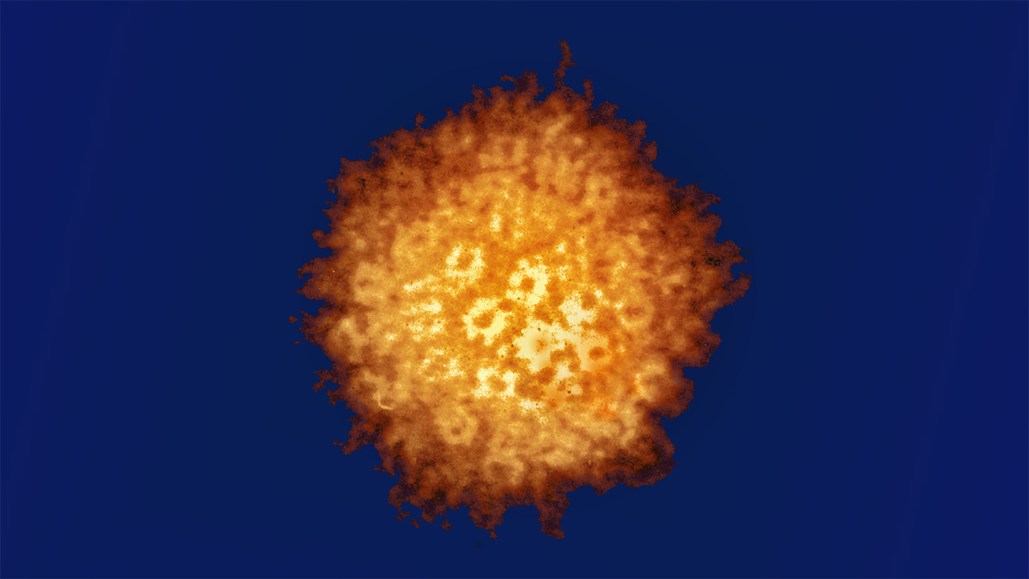A Novel Viral Gene Drive Strategy May Revolutionize Herpes Treatment

The words “herpes” and “spread” in the same sentence don’t typically spell good news. Unless, that is, you’re talking about a busybody new virus.
That virus includes designer DNA called a gene drive that spreads from one herpes simplex virus to another. And it may be a first step toward an entirely new way of treating the infection, researchers report September 17 in Nature Communications.
For now, the team has shown simply that their gene drive DNA sequence can copy/paste itself into the genomes of other herpes viruses during an infection in mice. But the idea is to one day create a gene drive virus that shuts down herpes simplex infections in people, says Keith Jerome, a virologist at the Fred Hutchinson Cancer Center in Seattle.
Jerome ultimately wants to say to patients: “You don’t ever have to worry about this virus again. It’s never going to cause disease. You’re never going to infect another person. It just doesn’t matter to your life anymore.”
Though some may consider herpes more annoyance than agony, “these viruses have a tremendous effect on people’s health,” Jerome says. They can cause a huge range of symptoms — some people don’t even know they’re infected while others sprout oozing sores around the genitals or mouth.
Current therapies include antivirals, but they just tamp the virus down, they don’t eradicate it. One challenge is that herpes can lie dormant in people’s nerve cells for months or years and then roar awake again, spawning fresh blisters. Infection lasts a lifetime.
A therapy that disables the slumbering virus could potentially cure the infection. But how to do it? Marius Walter, a Fred Hutch virologist, remembers reading an article that claimed designing gene drives in viruses was impossible. “That got me thinking,” he says.
For years, scientists have investigated gene drives in insects (SN: 6/3/22). Researchers can create mosquitoes, for instance, with a parasite-resistant gene that spreads rapidly over new generations. That could be useful in preventing malaria, a parasite-caused disease — though no gene drives have been tested in the wild.
Walter was curious if a similar strategy could work in viruses. Instead of a gene drive that spread from mosquito parent to mosquito offspring, he wanted one that spread from one virus to its neighbors. In 2020, Walter and Eric Verdin of the Buck Institute for Research on Aging, Novato, Calif., did just that. A gene drive they engineered into a herpes virus could hop to other viruses in a petri dish, the duo reported in Nature Communications.
That gene drive contained a CRISPR gene editor that chops other viruses’ DNA (SN: 10/7/20). When the viruses repair themselves, they use the gene drive as a template, copying the engineered DNA into their genomes. It’s how one gene drive virus can multiply into many.
In the new work, Walter’s team tried the technique in mice, infecting them with two different viruses. One was a herpes virus designed to glow yellow. The second was a gene drive virus. The gene drive included genetic instructions for making a red fluorescent protein.
The researchers looked at different mouse tissues under a microscope and saw both yellow and red — a sign that cells could be infected by multiple viruses at once. That wasn’t a given, Walter says. And perhaps even more encouraging: the relative amount of each color changed over time. After four days, up to 90 percent of virus in the brain, for example, was red. That meant almost all of the yellow virus had been converted into the gene drive version, Walter says.
Sponsor Message
“This paper is quite a tour-de-force,” says Nikolai Windbichler, a molecular biologist at Imperial College London who has worked on gene drives in insects for more than a decade. “It’s a huge amount of work,” he says.
The gene drive could also spread to dormant viruses, the team showed in experiments with mice that had been previously infected with herpes. Targeting these “sleeping” viruses is key for any future therapies, Walter says.
The team’s next step is to create a viral gene drive that does more than change a virus’s color. Future versions will change a herpes virus from something that causes disease to something that is less infectious, perhaps, or causes less severe symptoms.
“Our goal is to turn these into real therapies that help people,” Jerome says.
Currently, the technology is far from having therapeutic potential, says Hongsheng Dai, a virologist at Southern Medical University in Guangzhou, China who has also published work on a herpes virus gene drive. He notes that some of the viruses in the new study became resistant to the gene drive, protecting them from its gene-editing powers. That’s a problem if you’re trying to wipe out a particular virus, Dai says.
But Walter’s team doesn’t seem worried. There are workarounds to resistance, he says. Scientists can try targeting the gene drive to different areas of the viral genome, for one. That’s something that will need to be investigated, he says.
Still, it will probably be years before a technology like this is ready for prime time, Walter and Jerome say. They’ll have to ensure the gene drive virus doesn’t cause disease. And they’ll need to show that it’s not transmitted between people. “We have to be sure that everything is safe,” Jerome says.




